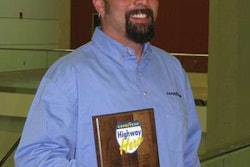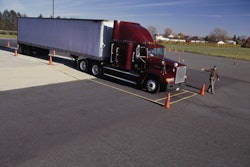Representatives of affiliates and member companies of the American Trucking Associations told the Federal Motor Carrier Safety Administration Friday, March 26, that the latest safety figures help to show the effectiveness of the current hours-of-service rules. These representatives also told FMCSA that the rules can be improved with flexibility in the sleeper berth provision.
Bill Usher, president of Usher Transport, an ATA member company, was the first speaker at Friday’s FMCSA listening session in Louisville, Ky. This was the last of five scheduled across the country as the FMCSA again considers HOS changes requested by special interest groups.
Usher said that the trucking industry has seen a large decline in the truck-involved fatality rate since the current HOS rules took effect. The continually improving safety figures illustrate the real-world benefits of the current rules, which are based on a decade of extensive research and analysis, he said.
The most recent figures from the U.S. Department of Transportation indicate that the truck-involved fatality rate declined 12.3 percent in 2008 to 1.86 per 100 million miles, from 2.12 per 100 million miles in 2007. This decline marks the largest year-to-year drop ever and the fifth consecutive year the fatality rate has dropped. Persons injured in large truck crashes went from 44.4 per 100 million miles to 39.6, an 11 percent reduction.
Since the new HOS regulations took effect in 2004, the rate of persons injured in large truck crashes has dropped 25 percent, and the truck-involved fatality rate has dropped 22 percent. The fatality rate is at its lowest since DOT began keeping those records in 1975 and has dropped 66 percent since that time.
Kentucky Motor Transport Association President Jamie Fiepke and America’s Road Team Captain Steve Fields, a professional truck driver who has driven more than 2.5 million crash-free miles, also spoke at Friday’s session. An over-the-road driver for YRC in Kansas City, Mo., Fields told FMCSA that the current HOS rules are working well, except for the sleeper berth rules, which must be revised. Professional drivers need flexibility when sleeping in the cab because their body clocks often differ from the rules, he said.
FMCSA used the public listening sessions to gather public comment as it conducts another rulemaking regarding the hours-of-service regulations as part of an October 2009 settlement with groups challenging the current regulations. A federal appeals court twice has rejected the hours-of-service rules FMCSA has implemented since January 2004, and several groups have challenged the current regulations for allowing 11 hours of driving per shift and a 34-hour restart of cumulative on-duty limits.
The settlement with Public Citizen, Advocates for Highway and Auto Safety, the Truck Safety Coalition, and the International Brotherhood of Teamsters placed a hold on that litigation pending the completion of another rulemaking. Under the terms of the settlement, FMCSA must submit a notice of proposed rulemaking to the Office of Management and Budget, and the agency then will have another 12 months to issue a final rule. Meanwhile, the current rules remain in effect.













